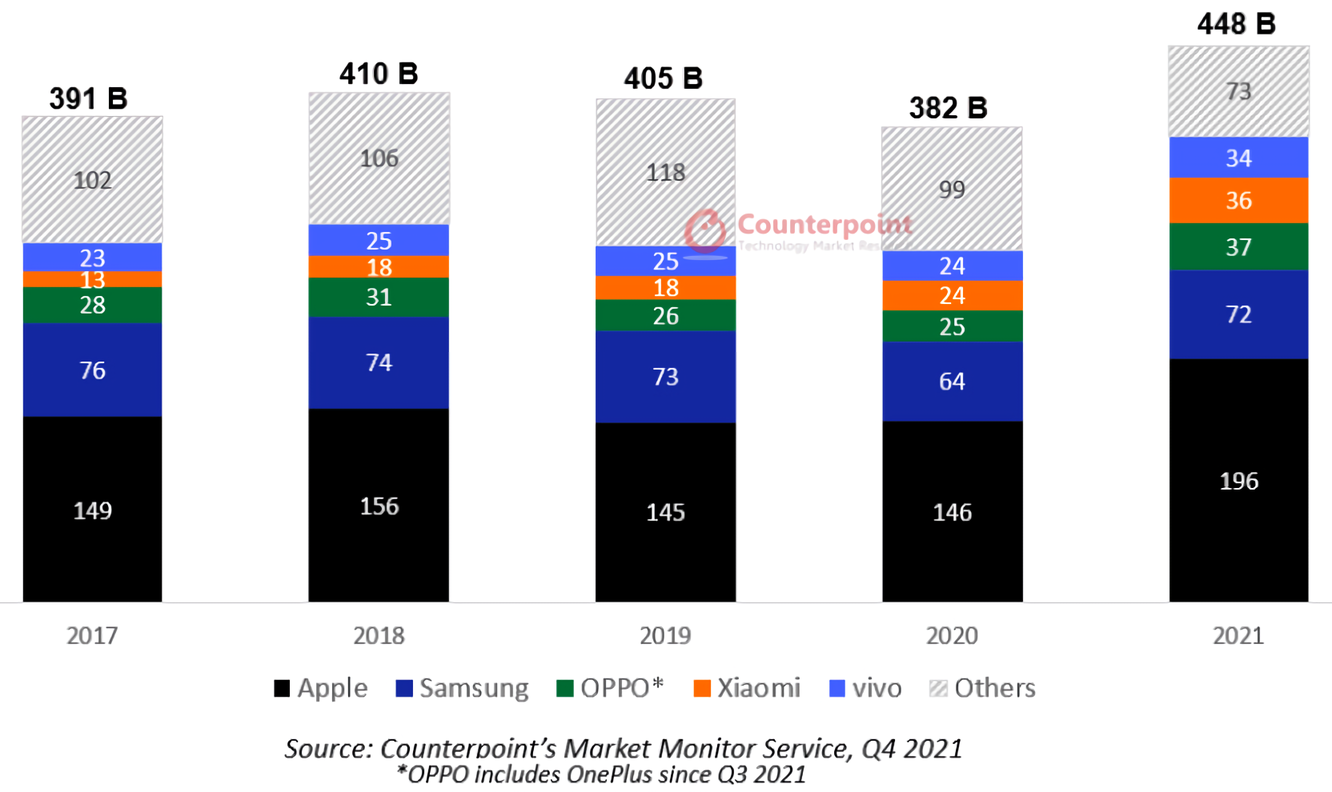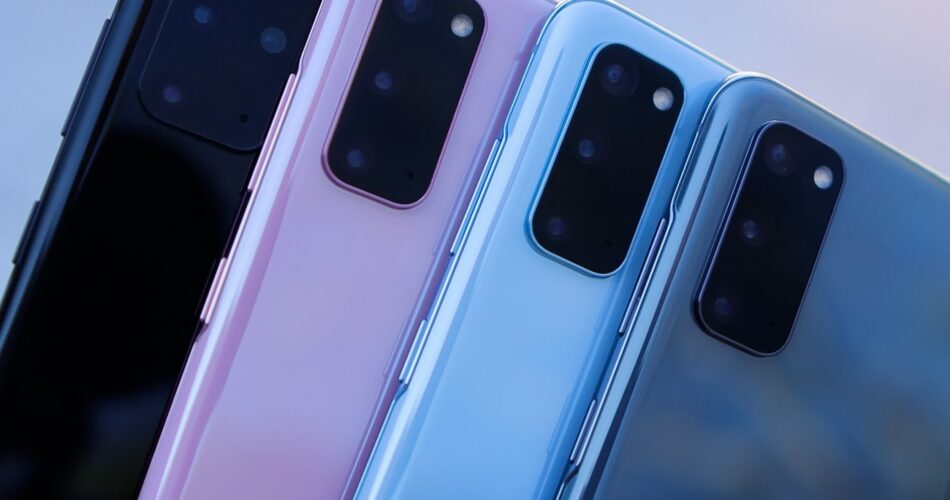In brief: The global smartphone market generated north of $448 billion in 2021, an increase of more than 17 percent compared to the $382 billion that was produced in 2020. Better yet, revenue was up 20 percent quarter over quarter despite component shortages and virus restrictions that continue to disrupt the supply chain.
Apple led the way with $196 billion in revenue – an increase of 35 percent year over year – followed by Samsung with $72 billion, up 11 percent YoY. Oppo, Xiaomi and Vivo were responsible for $37 billion, $36 billion and $34 billion, respectively, as the top five smartphone brands contributed more than 85 percent of total smartphone revenue last year.

The research firm noted heightened demand for mid-range and flagship smartphones, which it attributed to the pandemic as consumers sought out better devices for learning, working and staying entertained at home.
On the opposite end of the spectrum, some major OEMs have increased the prices of their entry level models in response to the component shortage.
All things considered, the average selling price of smartphones increased 12 percent last year, mostly due to the proliferation of 5G. Counterpoint said 40 percent of global smartphone shipments in 2021 were 5G compatible, up from only 18 percent in the year prior.
Innovation in the smartphone space has cooled in recent years, giving way to evolutionary updates like better camera systems, higher-resolution displays and faster processors. The next big thing was widely expected to be foldables, but those haven’t gained traction as quickly as some had hoped.
Image credit Daniel Romero
Source link


